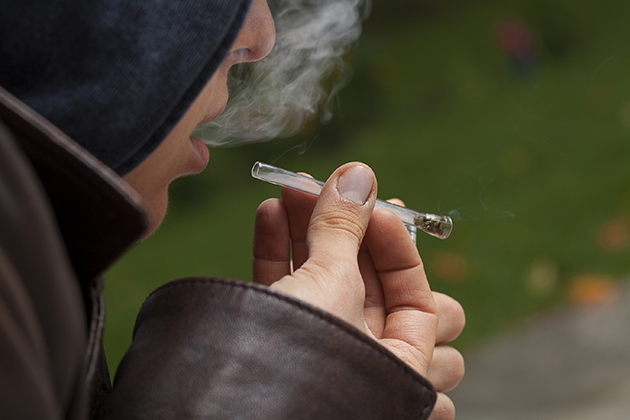
Marijuana has been in the news recently, with states including Connecticut moving to legalize medical marijuana, and some – Colorado and Washington – taking the further step of legalizing recreational use of the drug.
Yet the pros and cons of marijuana use – medicinal or otherwise – have long been controversial. Just this week, a study was published on the long-term effects of marijuana use on the brain. Often the biggest concern centers around the impact it may have on teenagers.
Dr. Yifrah Kaminer is a child and adolescent psychiatrist at UConn Health who focuses on adolescent high-risk behaviors. He is a prolific author and renowned researcher on youth substance use disorders, and is frequently asked to speak on the topic to school and community groups. UConn Today asked Kaminer about the impact of marijuana on adolescents, and his views on legalization.
Q. How does smoking marijuana impact a teenager and his or her development?
A. Marijuana impairs concentration, attention, short-term memory, and motivation, so it compromises learning ability and the attainment of new knowledge.
Early marijuana use increases the probability of early onset psychosis that also responds poorly to treatment.
Driving under the influence of marijuana has a similar effect as alcohol DUI – which means an increased risk for vehicular crashes. Unfortunately, teens do not believe that marijuana use has deleterious effects on driving, including impaired motor coordination.
Q. What do you say to those who believe marijuana is harmless and you can’t become addicted?
A. “False knowledge is more dangerous than ignorance” (George Bernard Shaw). Misinformation disseminated by the pro-legalization camp, which is motivated by ideological egocentrism and/or greed, qualifies for Shaw’s statement.
Cannabis withdrawal and dependence are clinically recognizable and defined syndromes (Diagnostic and Statistical Manual of Mental Disorders or DSM-5, 2013). Nine percent of marijuana users in the U.S. become dependent. The number doubles to 17 to 18 percent when age of onset is during early teens, as demonstrated by the present trend.
Q. Medical marijuana dispensaries recently opened in Connecticut. What are your concerns about them?
A. For individuals with a Connecticut medical marijuana card: there are no clear guidelines about tetrahydrocannabinol (THC) – the main psychoactive (mind-altering) ingredient in marijuana – its concentration, purity, or content of pesticides, fungi, and other unhealthy materials. In addition, the lack of a safe storage procedure could allow others to access the medical marijuana. Also, driving under the influence of marijuana could lead to an increase in car accidents.
For the community: proximity to dispensaries has been associated with increased availability for people other than medical marijuana card holders – in particular minors. Decriminalization, medicalization, and legalization of marijuana each increase the number of marijuana first-time users and decrease age of first use. This could lead to growing public health problems, including medical, psychosocial, academic, and financial consequences.
Q. What are we learning from the Colorado experience?
A. The effects of medical marijuana implementations have been negative for the community and have led to an increase in crime rate, vehicular accidents among users, availability of medical marijuana to youth, increased emergency department referrals associated with marijuana ingestion by children, butane hash-oil lab explosions that resulted in burns and property damage (similarly to methamphetamine labs), increased marijuana use by teens with related school suspensions, and more.
Q. As more states pass laws allowing medical marijuana, do you think more of them will follow in Colorado and Washington’s footsteps and make it legal overall?
A. We all need to pause three to five years, and examine the consequences of legalization in Colorado and Washington states. There is no rush to be another “wannabe state.” For example, Minnesota has just approved medical marijuana but not a smokable form. This is a good example that improving medical marijuana licensing procedures should focus not on getting high by THC, but on utilizing cannabis components (cannabinoids) that might have specific medical effectiveness and can be supervised by the FDA.



